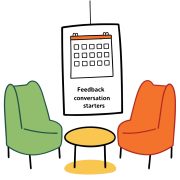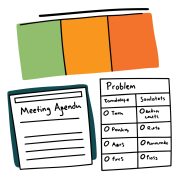
Question More, Action Knowledge.
Remember, at QMAK, we don’t just teach; we empower. We don’t just inform; we inspire. We don’t just question; we act. Become a Gold Member, and let’s unlock your child’s full potential, one question at a time.

How parents respond to a child’s emotions, mistakes, and challenges profoundly shapes their self-concept and approach to difficulties.
A supportive, empathetic parenting style fosters confidence and emotional regulation rather than vulnerability to victim thinking.
Research shows that derisive parenting, which involves demeaning or belittling the child, can foster dysregulated anger in children, leading to difficulties in peer relationships (Dickson et al., 2019).
By adopting a parenting approach that is empathetic, supportive, and encouraging, you can help your child develop positive self-esteem and emotional regulation skills that counter tendencies toward feeling victimized or helpless.
These activities are designed to help parents create consistent patterns of supportive interaction that build children’s emotional strength, self-confidence, and healthy response patterns to life’s challenges.
Purpose: To reinforce positive self-esteem and emotional regulation through consistent, specific appreciation and acknowledgment.

Establish a consistent practice of acknowledgment and appreciation:
Use approaches that build genuine self-worth:
Help your child develop internal validation:
Address difficulties while maintaining positive focus:
Build a positive feedback culture:

Purpose: To help children identify, understand, and regulate their emotions through supportive guidance, building emotional intelligence and healthy coping skills.

Create the foundation for effective emotional support:
Identify times for supportive emotional guidance:
Guide your child through emotional understanding:
Help develop emotional management skills:
Create lasting emotional intelligence:

Purpose: To involve children in collaborative problem-solving, teaching them that their input is valued and that difficulties can be addressed through cooperative approaches.

Create a framework that supports productive problem-solving:
Guide constructive problem identification and discussion:
Guide the process of generating and evaluating options:
Translate decisions into concrete steps:
Build problem-solving capacity through reflection:

Purpose: To demonstrate and normalize compassionate behavior through your own actions, helping children develop empathy, kindness, and a constructive approach to others’ difficulties.

Strengthen your own capacity for compassionate behavior:
Demonstrate compassionate behavior in everyday situations:
Involve your child in acts of kindness and support:
Build understanding through conversation:
Create an environment where compassion is valued and normal:

Purpose: To develop positive self-concept through creative activities that highlight strengths, accomplishments, and positive qualities, creating tangible reminders of self-worth.

Create the right environment for meaningful engagement:
Guide creation of positive self-concept reinforcers:
Address particular aspects of positive self-concept:
Maximize the impact of completed projects:
Create lasting positive identity connections:

These activities are designed to help parents create a supportive, constructive parenting style that promotes positive self-esteem, emotional regulation, problem-solving skills, and compassion.
By implementing these approaches consistently, you can help your child develop resilience and a strong sense of self that counters victim mentality.

Remember that changing your parenting style is a process. Focus on progress rather than perfection, and be compassionate with yourself as you work to create a more supportive environment.
The goal is to help your child develop the internal resources that allow them to face life’s challenges with confidence rather than feeling victimized by them.

By addressing your parenting style, you’re providing your child with the emotional foundation they need to develop a resilient, empowered approach to life’s challenges.

Remember, at QMAK, we don’t just teach; we empower. We don’t just inform; we inspire. We don’t just question; we act. Become a Gold Member, and let’s unlock your child’s full potential, one question at a time.